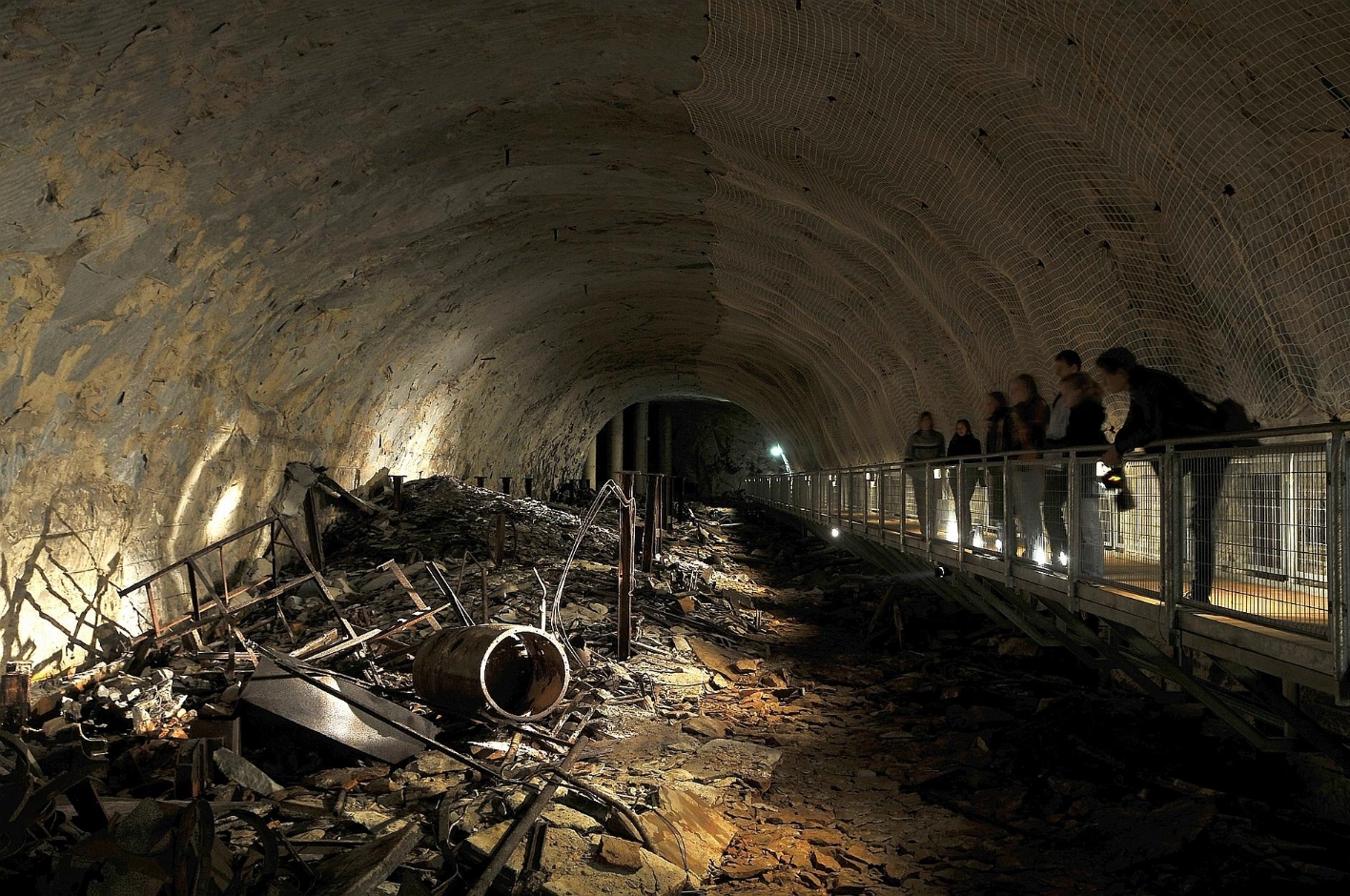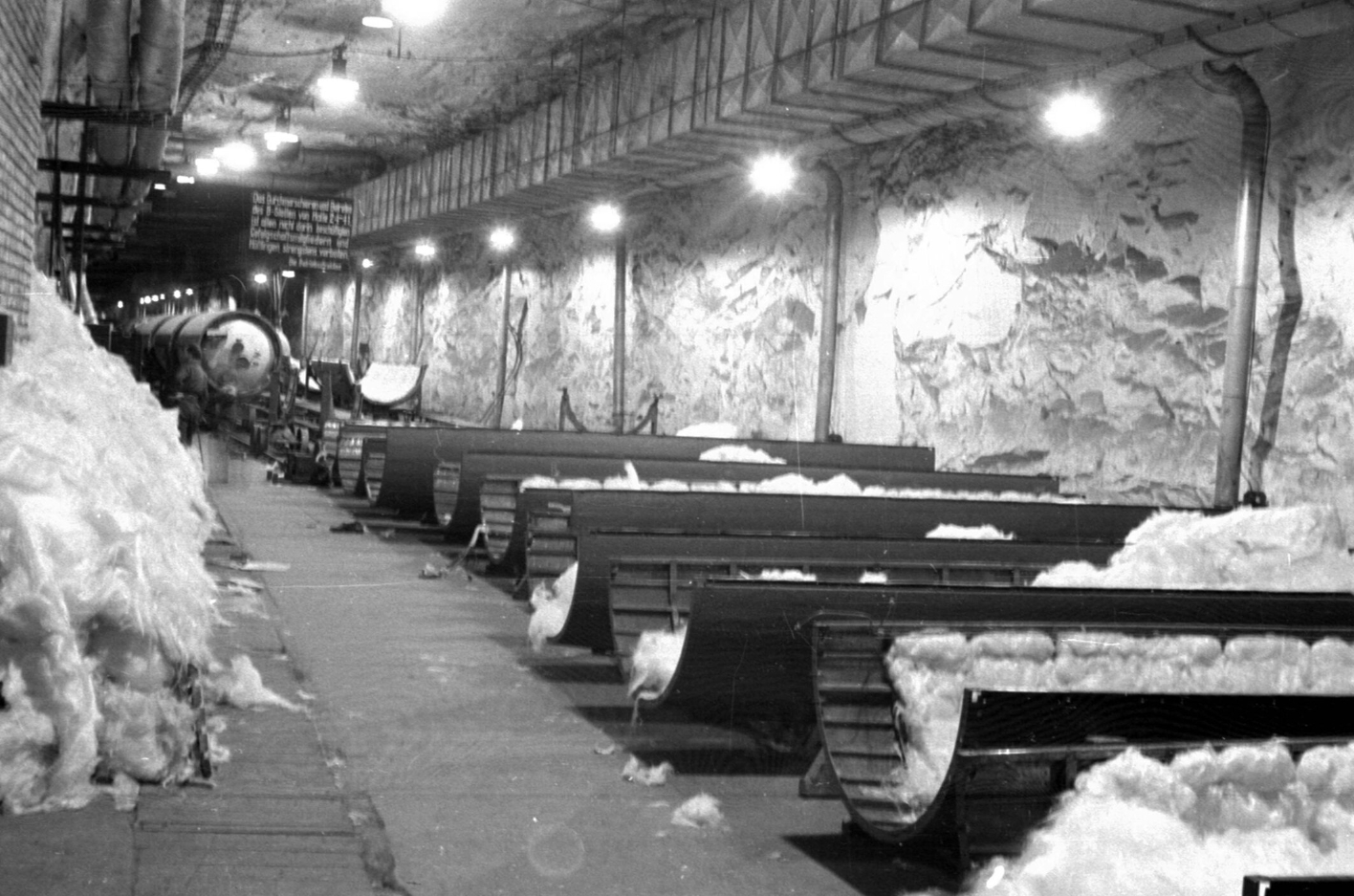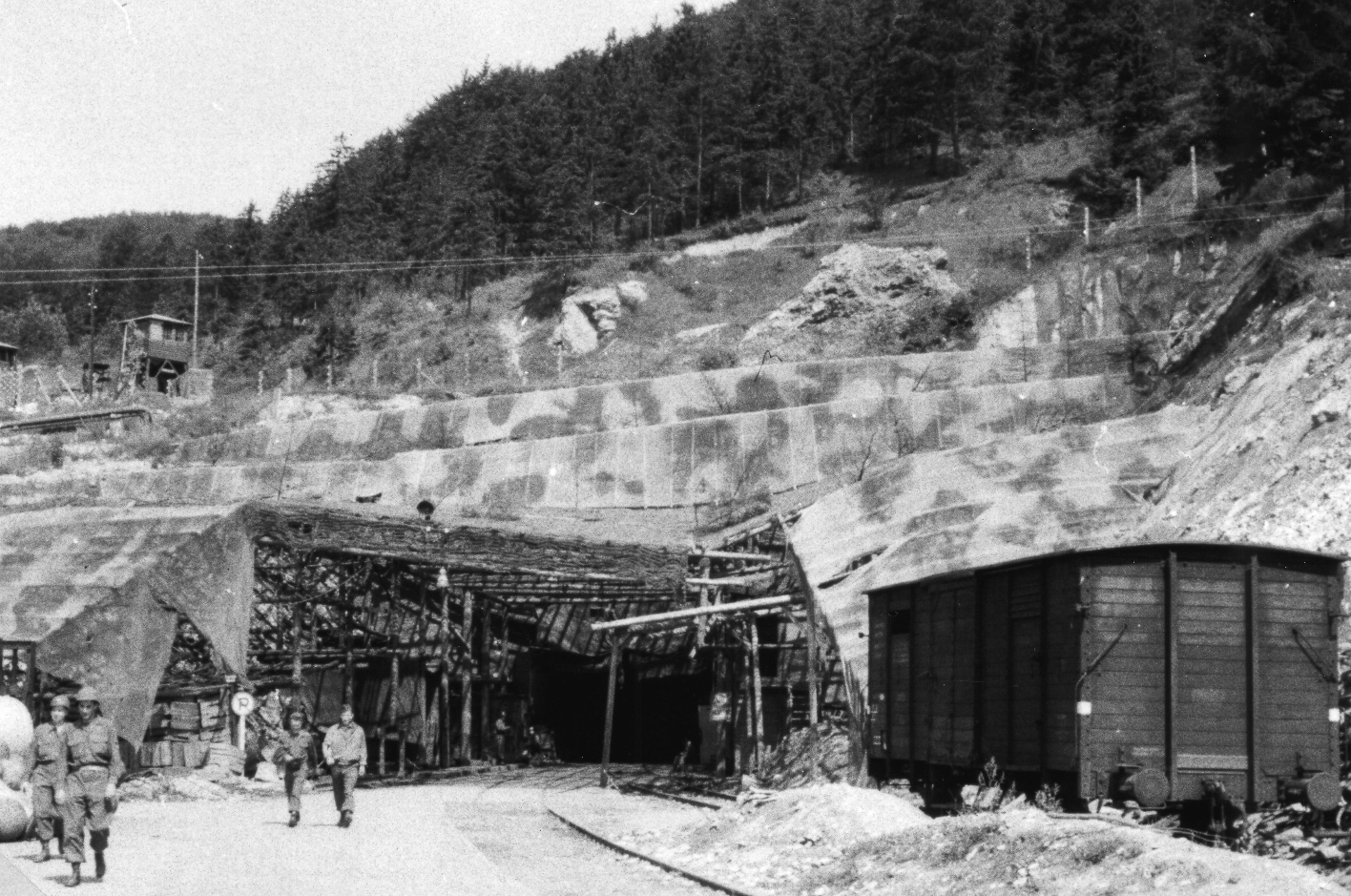

©Ceges/Soma, Brüssel

In the underground tunnel complex, concentration camp inmates had to perform forced labour for the German weapons industry. Inmates were kept in the tunnels for months and also slept there.
The tunnel complex had been a fuel storage facility for the Wehrmacht beginning in 1936. In the autumn of 1943, concentration camp inmates were forced to expand the tunnel system for the construction of V2 rockets. In the beginning four lateral chambers, of which three can be viewed today, served as "sleeping tunnels" for many thousands of inmates, who had to cram themselves into make-shift, four-level wooden bunkbeds. The hygienic conditions were catastrophic. Many thousands of inmates died in the first few months.
During the first half of 1944 the inmates gradually were move to the above-ground complex of
After the entrances were blown up by the Soviet military administration in 1947/48, the underground complex remained closed off for many decades. In 1995 the tunnel system was made accessible for tours through a newly constructed tunnel. The state in which the underground complex was found at that time has been changed as little as possible. Destroyed machinery, production remnants, and fallen chunks of stone lie in the assembly rooms, as they were found.

